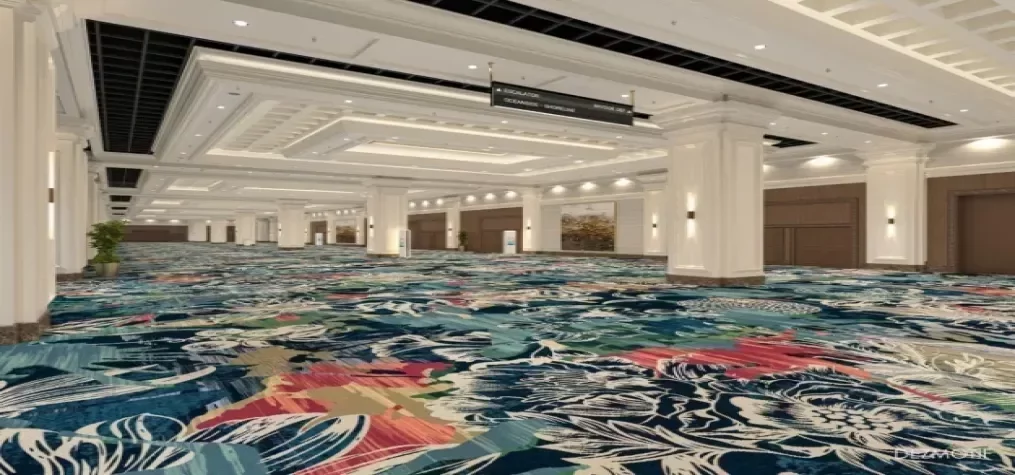The Event Marketing Workhorse: Websites that Convert

By Elizabeth Johnson
Since the first website went live 27 years ago, websites have become a standard piece of the marketing pie. Consumers have adapted to this “new normal” and expect organizations they interact with to have one that enables them to find everything they’re looking for at any given moment.
“The website is a very important marketing tool for Digestive Disease Week,” said Alison Moser, DDW director of marketing. “Not only is it the hub for abstract submitters, exhibitors and attendees to find important information, we also conduct retargeting campaigns to prospective attendees.”
While show organizers can develop a website relatively easily, how can they ensure they’re delivering the best user experience (UX) and converting site visitors into buyers or brand advocates? Experts in web development and digital marketing tackle tough issues around event website development to help organizers get the most out of their investment in this hardworking tool.
First, should event websites be integrated into the larger organization site or stand alone?
Melissa Ooi, executive vice president of ASP argued yes for brand messaging, usability and SEO.
“Content presentation/navigation is key when it comes to an event website,” Ooi said. “People need to find what they're looking for within three clicks, so trying to host a mass of tradeshow content with an already crowded association site is far from ideal.”
There are three good reasons to have a stand alone event website, according to Dave Dildine, director of digital services at Frost Miller.
“If the audience for the event is different from the audience for the organization and we need the event website to speak to this larger audience; if the amount of content needed to fully describe the event is too much for the home website, and if the organization's main website makes it difficult or impossible to serve the needs of the event,” Dildine explained.
He continued, “So, looked at from the other direction, it may be appropriate to host event content on your primary domain ONLY where the audience for the organization and the event are one and the same. For example, a professional conference where only members are invited to attend and where the primary domain can accommodate the event content in a way that is user-friendly.”
If an event does build a stand alone website, it should consider search engine optimization (SEO) strategies to improve ranking.
“Google looks for content,” explained Ooi. “The content that most organizers tend to produce is understandably show-centric, which is great if someone searches by the show name.”
She continued, “But organizers should actively encourage exhibitors, sponsors and speakers to upload their own content. They'll use industry terms and product names that are relevant to your searching audience. For example, if you have 200 exhibitors uploading a company description, that's an additional 200 pages for Google to find.”
She also added that organizers should remove the show year from the domain name.
“If your domain changes every year, then Google has to start from scratch every time it's launched,” Ooi said.
In order to create a positive UX and convert registrants, Dildine pointed out that event websites have a lot in common with single product consumer sites but that organizers do not have a lot of experience doing the hard sell.
“It’s really useful to get everyone thinking this way: our event is a product and we need to sell it like one,” Dildine said. “Everything about the design and UX of an event site should be geared toward getting users to click that register button.”
Other keys factors include keeping the navigation clear and simple, including messaging that speaks to your audience segment and uses obvious and repetitive calls to action, according to Ooi.
“Book a Booth, Register Now should be on every page,” she advised.
Organizers don’t have to guess at the best UX. They can find out exactly what users need. During its website redesign, DDW conducted a constituent survey and card sort exercise to better understand users’ needs and then built navigation that reflects this.
“It’s important to be clear and organized on our website, since many users have multiple roles within DDW,” Moser explained.
The experts offered a couple of additional points of advice.
“Have personality but be predictable,” Dildine said. “Some people complain that all websites look the same and there is some truth to this, but there is also a good reason.”
He continued, “When you come to a website where the logo is in the top left corner and the navigation runs horizontally across the top, you feel comfortable and you know how it works. If your event website has top level navigation that includes a link for Schedule, Hotel, etc. that your user expects to find, they won’t feel lost or have to search for these elements. Creativity and personality should be in the voice and in the visuals.”
Don't take your website for granted, added Ooi.
“It's the first and most important impression of your event before it actually happens,” she said. “Use analytics and take the time to really see what content makes users convert. Spend time on branding and messaging.”


Add new comment